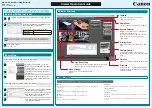
4.
Set the power verification and addressing (PVA) ID. Use PVA ID 0 for
the enclosure that contains the HSG80 controller(s). Set the PVA ID to
2 and 3 on expansion enclosures (if present).
____________________
Note
_____________________
Do not use PVA ID 1.
With Port-Target-LUN (PTL) addressing, the PVA ID is used
to determine the target ID of the devices on ports 1 through
6 (the LUN is always zero). Valid target ID numbers are 0
through 3 and 8 through 15. Target IDs 6 and 7 are reserved
for the controller pair, and target IDs 4 and 5 are never used.
The enclosure with PVA ID 0 will contain devices with target
IDs 0 through 3; with PVA ID 2, target IDs 8 through 11;
with PVA ID 3, target IDs 12 through 15. Setting a PVA ID of
an enclosure to 1 sets target IDs to 4 through 7, generating a
conflict with the target IDs of the controllers.
5.
Remove the program card ESD cover and insert the controller’s program
card. Replace the ESD cover.
6.
Install disks into storage shelves.
7.
Connect a terminal to the maintenance port on one of the HSG80
controllers. You need a local connection to configure the controller for
the first time. The maintenance port supports serial communication
with the following default values:
•
9600 bps
•
8 data bits
•
1 stop bit
•
No parity
8.
Connect the RA8000 or ESA12000 to the power source and apply power.
____________________
Note
_____________________
For the HSG80 to see the connection to the KGPSAs, the
KGPSA host bus adapters must be cabled to the switch, with
the system power applied before you turn power on to the
RA8000/ESA12000.
9.
If an uninterruptible power supply (UPS) is used instead of the external
cache battery, enter the following command to prevent the controller
from periodically monitoring the cache batteries after power is applied:
Installing Fibre Channel Hardware and Configuring the emx Driver 4–11
















































